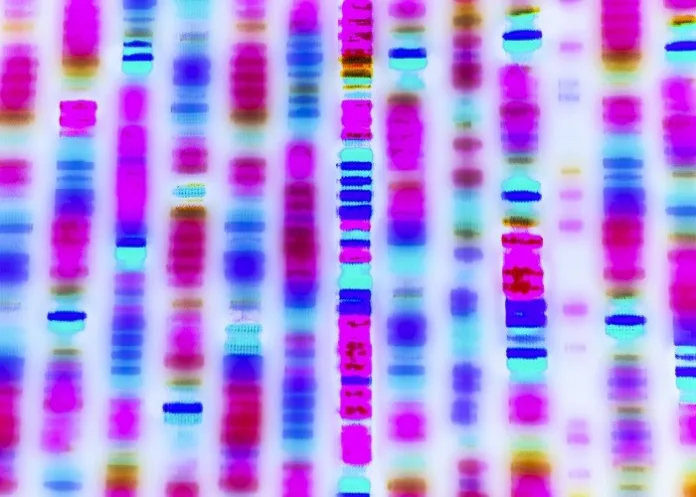Looking at gene patterns in the blood could speed up diagnoses in sick children, particularly when trying to figure out what is causing a fever – a virus, bacterial infection – and help doctors choose the right treatment, faster, say scientists.
Determining what causes a fever is often difficult and tests can take days or weeks to come back, and while development of their test is still at an early stage, the researchers from Imperial College London are optimistic.
If trials are successful and the approach is approved, the blood test could reduce the overuse of antibiotics, which are often prescribed to unwell children even though they only treat bacterial infections, not viruses, reports BBC.
This contributes to the problem of antimicrobial resistance, when drugs no longer treat infections they were designed to combat.
Finding patterns
Recent research on children in hospital with a fever in nine European countries found that 75% did not get a diagnosis.
Co-author of the study Dr Myrsini Kaforou, senior lecturer at Imperial College London, said finding out the underlying cause of fever can be the “biggest challenge” even with the best tests available.
And they can take anything from several hours to weeks to provide a result.
That means delays in diagnosing potentially life-threatening infections and diseases, such as sepsis, TB and pneumonia, and giving patients the right treatment quickly.
In their study, published in Cell Press Journal, the researchers used a different approach to diagnosing illness.
Analysing data from thousands of patients, including 1 000 children, with 18 infectious or inflammatory diseases, they were able to identify which key genes were switched on and off in response to a range of illnesses.
Some of the diseases analysed included flu, malaria, E.coli, meningitis and arthritis.
Because the human body needs the same set of genes to fight off diseases, researchers could use that as a basis to test for them.
These “molecular signatures” of disease were then tested in a group of more than 400 child patients, admitted to hospital with sepsis or severe infections, and compared with current gold standard testing methods.
‘Holy grail’
The study suggests the new approach is more than 90% accurate but the research team emphasises there is still much work to be done before a test can be used in practice.
“A future diagnostic test based on this approach could help provide the right treatment, to the right patient, at the right time, while optimising antibiotic use and reducing lengthy time to diagnosis for inflammatory diseases,” said Kaforou, senior lecturer at Imperial College London.
The new approach “could be transformative for healthcare”, said Professor Michael Levin, study co-author and chair in paediatrics at Imperial.
It is now being trialled in thousands of patients in hospitals in Europe, Africa and Asia. The researchers say the trials will help them discover how much it could improve decisions made in clinics.
Professor Damian Roland, emergency children’s doctor from University Hospitals of Leicester, said being able to promptly diagnose the underlying reason for a child’s fever or illness was “a holy grail”.
He said the research “opens up a gateway to a new model of care” but he cautioned that it was still in its early stages.
“Further research in avoiding any unintended consequences of early diagnosis will be vital to maximise the impact of this new innovation,” he said.
Study details
Diagnosis of childhood febrile illness using a multi-class blood RNA molecular signature
Dominic Habgood-Coote, Clare Wilson, Chisato Shimizu, Jethro Herberg, Michael Levin, Myrsini Kaforou et al.
Published in Cell Press Journal on 18 August 2023
Context and significance
Infectious and inflammatory diseases are the most common causes of children seeking medical care in both hospital and community settings. It is a considerable challenge for clinical teams to reliably distinguish common viral infections, bacterial infections (which are potentially serious), and less common inflammatory diseases, with existing tests when children initially present at healthcare settings. Habgood-Coote et al. describe an approach for simultaneously distinguishing between 18 infectious and inflammatory diseases using the differences in the levels of expression of 161 genes in patients’ blood. A future diagnostic test based on this approach could help provide the right treatment, to the right patient, at the right time, while optimising antibiotic use and reducing lengthy time to diagnosis for inflammatory diseases.
Summary
Background
Appropriate treatment and management of children presenting with fever depend on accurate and timely diagnosis, but current diagnostic tests lack sensitivity and specificity and are frequently too slow to inform initial treatment. As an alternative to pathogen detection, host gene expression signatures in blood have shown promise in discriminating several infectious and inflammatory diseases in a dichotomous manner. However, differential diagnosis requires simultaneous consideration of multiple diseases. Here, we show that diverse infectious and inflammatory diseases can be discriminated by the expression levels of a single panel of genes in blood.
Methods
A multi-class supervised machine-learning approach, incorporating clinical consequence of misdiagnosis as a “cost” weighting, was applied to a whole-blood transcriptomic microarray dataset, incorporating 12 publicly available datasets, including 1 212 children with 18 infectious or inflammatory diseases. The transcriptional panel identified was further validated in a new RNA sequencing dataset comprising 411 febrile children.
Findings
We identified 161 transcripts that classified patients into 18 disease categories, reflecting individual causative pathogen and specific disease, as well as reliable prediction of broad classes comprising bacterial infection, viral infection, malaria, tuberculosis, or inflammatory disease. The transcriptional panel was validated in an independent cohort and benchmarked against existing dichotomous RNA signatures.
Conclusions
Our data suggest that classification of febrile illness can be achieved with a single blood sample and opens the way for a new approach for clinical diagnosis.
BBC article – New test could speed up child illness diagnosis (Open access)
See more from MedicalBrief archives:
Parents too quick to medicate children's fevers – US poll
Repeated febrile convulsions linked to epilepsy and psychiatric disorders — large Danish study
EV-D68, the respiratory virus that can paralyse children

